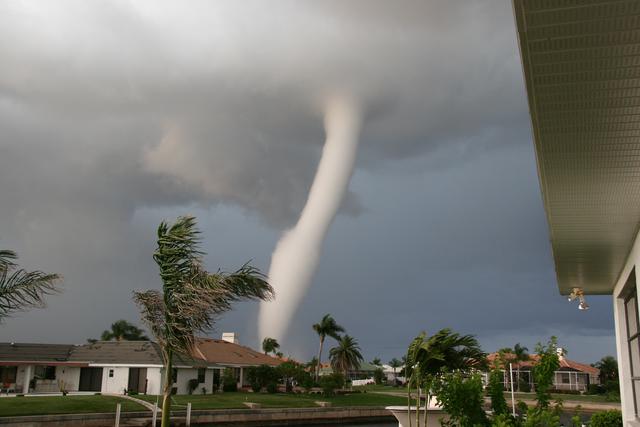Hurricane Spawned Tornadoes

So you’ve stocked up on canned goods, bottled water, and batteries, and you’ve rushed your nearest home improvement store for as much plywood as you could get your hands on. You know that you’re ready for all that mother nature can throw at you when Hurricane (insert name) strikes your area, but did you, while checking off the 3 cans of Spam and 2 portable generators from your shopping list, prepare for a hurricane-spawned tornado?
Many people don’t realize that one of a hurricane’s major threats is a hurricane spawned tornado. These incredible weather events are observed more frequently in places like the Great Plains, but are seen quite frequently when hurricanes strike. It is important to know what to do and where to go if and when a hurricane bearing down on your neck of the woods spawns this sometimes even deadlier threat.
What causes hurricane spawned tornadoes?
Tornadoes can form when a hurricane makes land fall and the ground winds slow, but the upper level winds keep their momentum. These hurricane-spawned tornadoes are most likely to occur in the right front quadrant of the hurricane. Though they can happen at any time, day or night, hurricane spawned tornadoes usually occur 12 hours after landfall and mainly during daytime hours.
They are very often embedded in rain bands and there is no way to predict accurately when and if a hurricane will produce tornadoes. For instance, Hurricane Beulah (1967) produced 141 tornadoes while Hurricane Isabel only produced 1.
One slightly reassuring fact about hurricane-spawned tornadoes is that although they are somewhat more unpredictable than tornadoes that occur in other weather contexts, and the storms that form them are themselves significant natural disasters, they are usually relatively weak.
What to do if a hurricane spawned tornado is on it’s way
Being informed is key. Before the hurricane approaches, be sure to get regular updates about the approaching storm from your local news affiliates, or check out the National Oceanic and Atmospheric Administration’s Active Weather Alerts, or take a look at FEMA’s State Offices and Agencies of Emergency Management page to connect to local emergency management offices, and as always, monitor NOAA Weather Radio for up to the minute updates.
If a tornado has been spotted and is on its way, find your way to either a basement or underground shelter built specifically for that purpose. If there isn’t one available, an interior room (preferably a bathroom), without windows is your best option. The extra framing and plumbing fixtures that line the walls of bathrooms can sometimes provide the extra needed protection you and your family need in the event of a hurricane spawned tornado. Get into the bathtub and cover yourself with a couch cushion or heavy blanket to protect yourself from shattered glass and other debris. If none of the aforementioned options are available, find an interior hallway or heavy table to get under.
It is important to remain alert during hurricanes. Monitoring the situation will give you the precious time needed to seek shelter if a hurricane-spawned tornado is on its way. Remember to take special precautions with the elderly, children, or others with special needs, as extra precautions may be necessary to ensure their safety.

Recent Comments